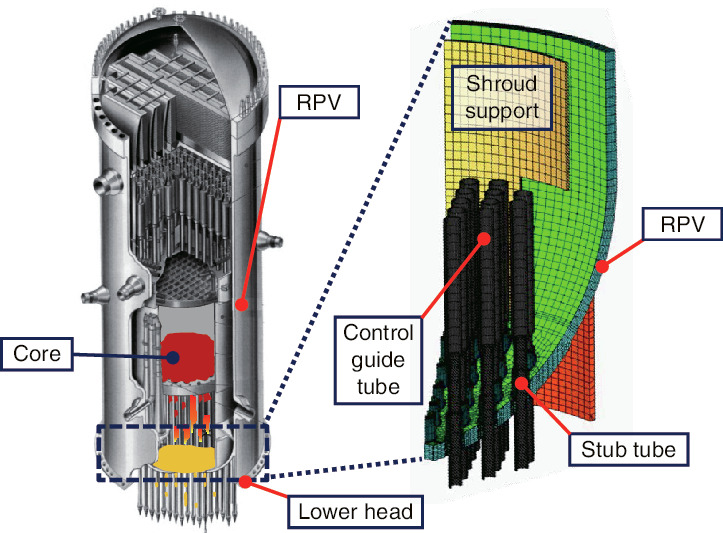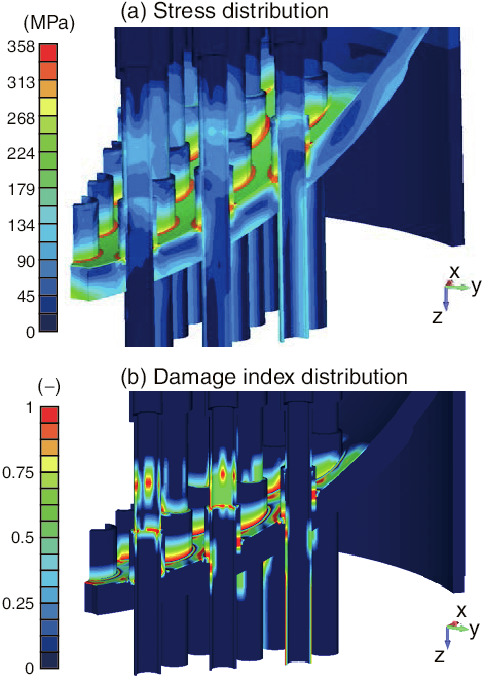
Fig.1-4 Analytical model of the RPV lower head

Fig.1-5 An example of the stress and damage-index distributions
To support estimates of the distribution of molten materials (fuel and melted core materials) inside and outside of the reactor pressure vessels (RPVs) of the TEPCO’s Fukushima Daiichi NPS (1F), we are researching assessment of the failure behavior of the RPV’s lower head due to relocation of molten materials. Since severe accidents may include a large uncertainty, the amount of molten materials to be relocated to the lower head and their states differ depending on the accidental scenario. Therefore, developing an analytical method applicable for several conditions is important. In addition, developing a method for estimating local failure by considering geometrically complicated structures is necessary because there are many penetrations and welds for connecting the control-rod-guide tubes in boiling-water reactors (BWRs) such as 1F.
In this study, we are developing a coupled-analysis method for thermal-hydraulics (TH) and structural analyses, which can be applied to the behavior of molten materials and to the thermal-elastic-plastic-creep behavior of the structures, respectively. Using this method, failure location and time are estimated by evaluating the damage index of materials due to creep deformation.
Fig.1-5 illustrates an example of analytical results obtained using a three-dimensional (3D) model that considers penetration of a BWR (Fig.1-4). As an initial condition, we assumed that 10% of the reactor core has been melted and relocated to the lower head and that the coolant water in the reactor completely evaporates. Here, this scenario differs from the 1F accident. Due to heating of relocated molten materials, deformation and stress are generated due to creep. Using a damage criterion that considers creep deformation, it is shown that molten materials may leak from penetrations such as control-rod-guide tubes or stub tubes where the calculated damage index showed high values (red regions in Fig.1-5(b)).
In the future, by comparison with experiments, we will improve the failure-evaluation methods and prediction of molten materials outside of the RPV in 1F.